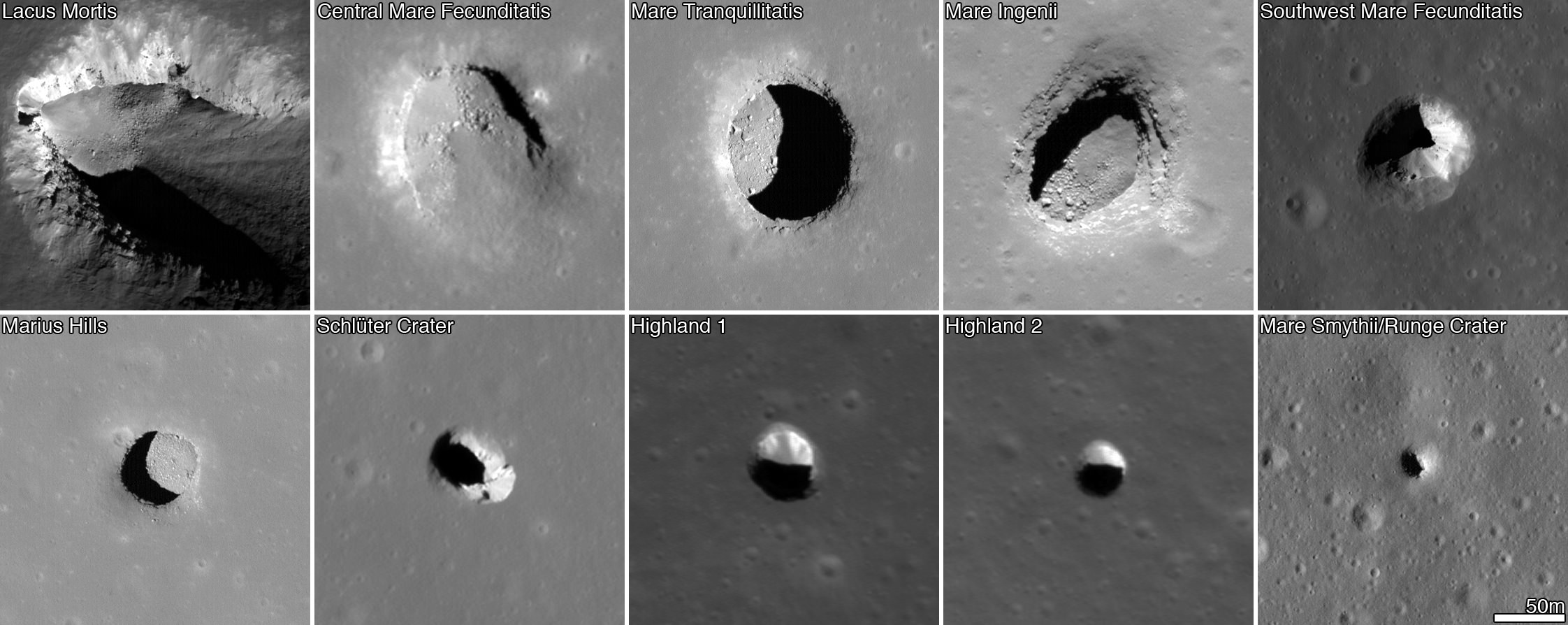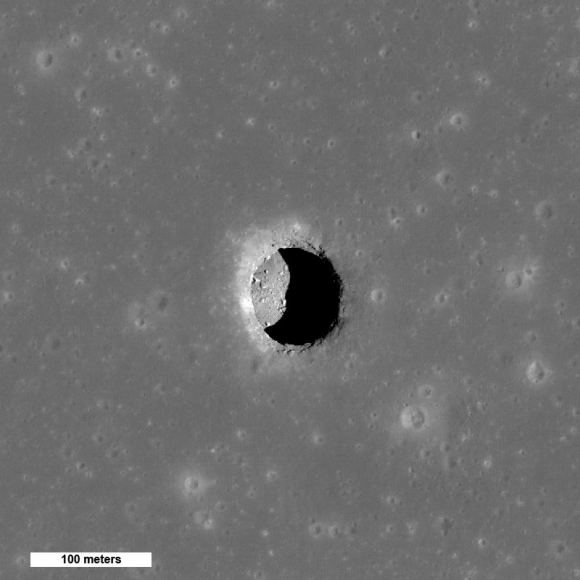Lava Tubes on the Moon Maintain Comfortable Room Temperatures Inside [View all]

Images from the Lunar Reconaissance Orbiter showing pits on the lunar surface. The images are each 222 meters (728 feet) wide. Credit: NASA/GSFC/Arizona State University
POSTED ONJULY 28, 2022 BY NANCY ATKINSON
Searching for a comfortable place to set up a research station on the Moon? Look no further than the interior parts of lunar pits and caves. While lack of air will be an issue, new research indicates these underground sanctuaries have steady temperatures that hover around 17 Celsius, or 63 Fahrenheit, even though the Moon’s surface heats up to about 127 C (260 F) during the day and cool to minus 173 C (minus 280 F) at night.
Lunar pits, or lava tubes were discovered in 2009 by the Lunar Reconnaissance Obiter and Japan’s Kaguya spacecraft. These are deep holes on the moon that could open into vast underground tunnels. They likely could serve as a safe shielding from cosmic rays, solar radiation and micrometeorites for future human lunar explorers. But now we know they could provide thermally stable sites for lunar exploration.
These long, winding lava tubes are like structures we have on Earth. They are created when the top of a stream of molten rock solidifies and the lava inside drains away, leaving a hollow tube of rock. For years before their existence was confirmed, scientists thought there were hints that the Moon had lava tubes based on observations of long, winding depressions carved into the lunar surface by the flow of lava, called sinuous rilles.
So far, about 200 lunar pits have been found and at least 16 of these are probably collapsed lava tubes, with the potential for ‘livable’ space, said Tyler Horvath, a UCLA doctoral student in planetary science, who led the new research. Two of the most prominent pits have visible overhangs that clearly lead to some sort of cave or void, and there is strong evidence that another’s overhang may also lead to a large cave.

This is a spectacular high-Sun view of the Mare Tranquillitatis pit crater, revealing
the overhang and deep, dark pit. This image from LRO’s Narrow Angle Camera is
400 meters (1,312 feet) wide, north is up.
Credits: NASA/Goddard/Arizona State University
More:
https://www.universetoday.com/156932/lava-tubes-on-the-moon-maintain-comfortable-room-temperatures-inside/

